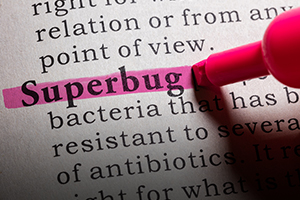Killing Superbugs

As scientists all over the world work to find ways to combat today’s antibiotic-resistant superbugs, one team of researchers is literally digging for new solutions…in dirt. One shovelful of soil contains tens of thousands of organisms – many of which have never been studied until now – and some of them are already showing promise.
Researchers recently discovered an organism that produces a new class of antibiotics, dubbed malacidins. In laboratory testing, these drugs were shown to be effective against several superbugs, including methicillin-resistant Staphylococcus aureus (MRSA). Furthermore, the new drug did not stimulate resistance due to a calcium-dependent gene that acts as an on-off switch, making it harder for bacteria to evolve.
Although many of the antibiotics used today are actually produced by bacteria (which have been fighting each other for millions of years) they are difficult to reproduce in a laboratory petri dish. In recent years, the development of metagenomics has allowed researchers to sample molecules directly from the environment and reproduce them through cloning.
It may take years for these new drugs to hit the market, but this study illustrates that there is still much to be learned and derived from the world around us.
For information: Sean Brady, Rockefeller University, Howard Hughes Medical Institute, 1230 New York Avenue, New York, NY 1006; phone: 212-327-8280; fax: 212-327-8281; email: sbrady@rockefeller.edu; website: https://www.rockefeller.edu/